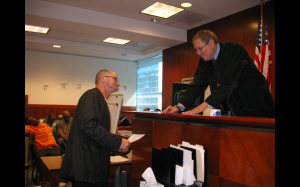Jan. 14, 2013
 Governor Brown has made his position clear. He will take the issue of whether additional prisoners should be released, back to the Federal Courts. The question to be answered is whether California has he done enough to satisfy the courts, by reducing the number of prisoners by 43,000 inmates over the last 15 months.
Governor Brown has made his position clear. He will take the issue of whether additional prisoners should be released, back to the Federal Courts. The question to be answered is whether California has he done enough to satisfy the courts, by reducing the number of prisoners by 43,000 inmates over the last 15 months.
Governor Brown claims that medical concerns, the basis of the federal court order, have been satisfied both by medical facility improvements and by substantial reductions in the number of prisoners. Brown has attacked the courts as meddling with the internal affairs of California. Reform advocates on the other hand, argue that California hasn’t done enough to reduce the number of inmates, and that even a reduction by an additional 13,000 inmates as the court order demands, is only a first step in enacting necessary prison reform in California.
A related issue is the number of California prisoners in private prisons. According to a recent article in the Los Angeles Times, “State prison reports show that since November, California has been increasing the number of inmates shipped out of state. Brown last year said he intended to end the state’s contracts with private prison operator Corrections Corp. of America as a way to save money. A July research brief for the Center on Juvenile and Criminal Justice, reports that the state currently spends more than $426 million a year to buy space at prisons operated by the Tennessee-based company. (The California Department of Corrections and Rehabilitation contends the spending is much lower: $316 million.) The number of out-of-state inmates has run from a high of 10,000 in 2010 to a low of 8,500 last October. State prison population reports show it rose to more than 8,900 in late December”
This is a “hot button” issue for many prisoner advocates, as private prisons, located outside the state, make contact with family and community difficult at best.It remains to be seen whether the courts will lift their demand that California reduce its prison population further or whether Brown will succeed in staving off further prison reductions. But the issue of whether California has gone far enough to reduce its prison population, will continue to be a highly charged issue.



